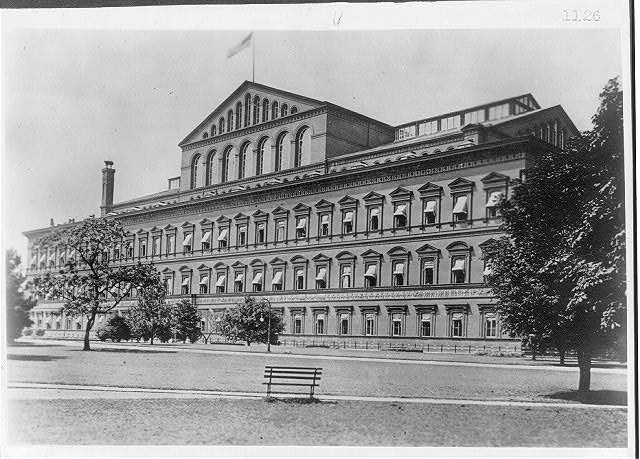The origins of the Veterans Benefits Administration (VBA) date back to the country’s earliest days. During the American Revolution, the Continental Congress passed the first national pension laws for wounded or injured soldiers but left it to the states to distribute relief. After 1789, the federal government assumed responsibility for the pension system. In the early 1800s, a small office of three in the War Department handled the clerical work relating to claims and the few thousand Veterans on the pension rolls. As the number of beneficiaries increased over the decades, so did the size of the workforce.
By the mid-1830s, the Bureau of Pensions, as the office came to be called, employed a staff of 18 dispensing $2-3 million in payments annually to some 40,000 Veterans, widows, and dependent children. Clerks in the Washington DC office reported to the Commissioner of Pensions, a presidentially appointed position created by Congress in 1833. Another Congressional Act in 1849 transferred the Pension Bureau to the newly created Department of the Interior, where it would remain until 1930.
The pension system grew dramatically after the Civil War. For the first time, the federal government regarded diseases contracted during military service as grounds for claiming disability. From 1863 to 1888, the Pension Bureau received on average 40,000 applications a year from Union Veterans or their survivors. An 1890 law expanded eligibility even further by granting pensions to any Union Veteran too infirm to work. Within a decade, pension numbers more than tripled, from 303,000 in 1883 to 966,000 in 1893.
Postcard image of the Pension Bureau building

Pensions Building, c. 1920.

Group of Pension Bureau special examiners, 1904
Spending on pensions also soared and routinely consumed more than 30 percent of the federal budget in the 1890s. (These payments only ceased when the last Civil War beneficiary, the daughter of a Union soldier, died in 2020 at age 90). By this time, the bureau had grown so large that Congress funded the construction of a new building to house the 2,000 men and women who worked in the capital. The massive Italian Renaissance Revival-style structure occupied a full city block and would serve as the Pension Bureau’s headquarters from 1885 to 1926. In addition to the Washington, D.C. workforce, the bureau employed another 400 persons at 18 pension agencies in cities across the country.
During World War I, the federal government introduced two new types of Veterans benefits: insurance and vocational training for the disabled. These programs were first handled by separate organizations until Congress in 1921 centralized their management in the Veterans Bureau. Meanwhile, the Bureau of Pensions continued to administer the pension system for Veterans of previous wars. In 1930, Congress decided to consolidate all Veterans benefits and services in a single federal agency, the Veterans Administration.
The Veterans Administration faced unprecedented challenges after World War II. Millions of returning Service members sought to collect on the benefits they were eligible for, including the education and loan assistance offered by the 1944 GI Bill. The volume of business was staggering. In the first five months following the war, VA processed 1.5 million disability claims alone. By the time the provisions of the WWII GI Bill had expired, the agency had helped more than 12 million Veterans advance their education or secure low-interest home loans.
To increase efficiency and better manage its workload, VA carried out an internal reorganization in 1953 that led to the establishment of the Department of Veterans Benefits, the direct forerunner of the Veterans Benefits Administration. The department was responsible for overseeing all types of benefits except for insurance. In 1989, the restructuring that accompanied the creation of the Department of Veterans Affairs united insurance with the other major benefit programs managed by VBA.
From its humble beginnings in the Revolutionary era, the Veterans Benefits Administration has grown into a dynamic organization employing more than 24,000 people in its Washington, D.C. headquarters and at 56 regional offices. VBA now distributes almost $135 billion in benefits and services annually to nearly 6 million Veterans and their family members.
VBA also continues to evolve. In the last decade, it has made great strides in digitizing records, automating processes, and implementing other modernization initiatives to improve delivery of benefits to the Veteran community.
All photographs courtesy of the Library of Congress.



